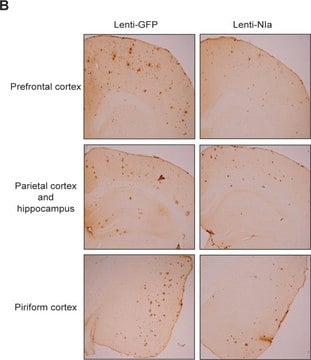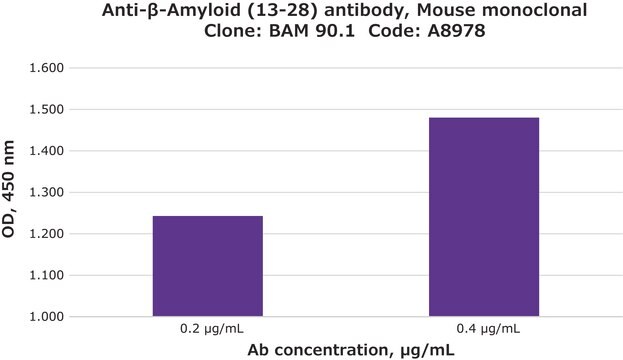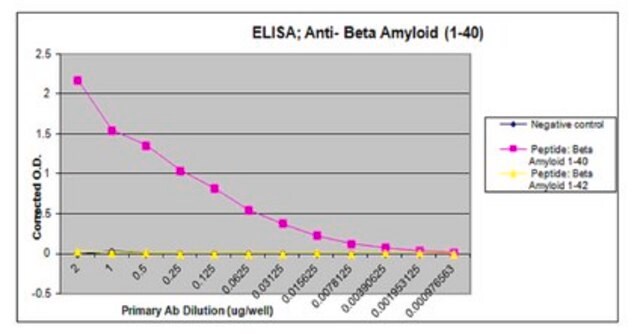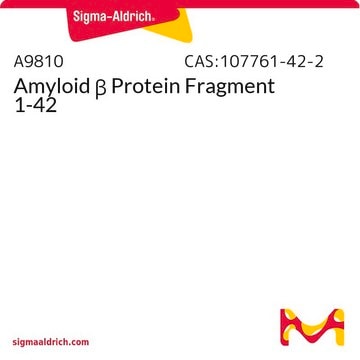일반 설명
β-amyloid gene is located on human chromosome 21q21.
The β-amyloid precursor protein (APP) is cleaved sequentially by the proteolytic enzymes β-and γ-secretase to produce β-amyloid (Aβ) peptides with the Aβ1-42 and the Aβ1-40 forms being the most prevalent. Secreted Aβ peptides are degraded either via a re-uptake mechanism followed by endosomal degradation, or by an extracellular insulin degrading enzyme. Extracellular accumulation of Aβ leads to the formation of aggregates, fibrils and eventually amyloid deposits called neuritic plaques, which is the hallmark of Alzheimer′s disease (AD).
The antibody reacts specifically with β-amyloid protein. The epitope recognized by the antibody resides within amino acids 1-12 of the β-amyloid protein. It specifically stains amyloid plaques within the cortex and amyloid deposits in blood vessels using formic acid-treated, formalin-fixed, paraffin-embedded, and Methacarn-fixed sections of human Alzheimer′s disease (AD) brain tissue.
면역원
Synthetic β-amyloid peptide, conjugated to KLH.
애플리케이션
Monoclonal Anti-β-Amyloid antibody has been used in immunoprecipitation analysis, microarray-based immunoassay and microarray.
Mouse monoclonal anti-ABETA was used to treat old WT PDAPP mice with amyloid accumulation and learning deficits in an attempt to improve learning and decrease accumulation, however no response was observed.
The antibody is useful in immunohistochemistry, immunoblotting, ELISA, and competitive ELISA. Also, this antibody has been used to neutralize Aβ assemblies in brains of transgenic mice expressing a mutant form of amyloid precursor protein, and for in vivo deep tissue imaging using near-IR optical spectrum.
생화학적/생리학적 작용
β-amyloid gene acts as the substrate of insulin-degrading enzyme (IDE). It plays a major role in the pathogenesis of Alzheimer′s disease (AD) and type 2 diabetes mellitus (DM2).
물리적 형태
Solution in 0.01 M phosphate buffered saline, pH 7.4, containing 15 mM sodium azide.
면책조항
Unless otherwise stated in our catalog or other company documentation accompanying the product(s), our products are intended for research use only and are not to be used for any other purpose, which includes but is not limited to, unauthorized commercial uses, in vitro diagnostic uses, ex vivo or in vivo therapeutic uses or any type of consumption or application to humans or animals.












